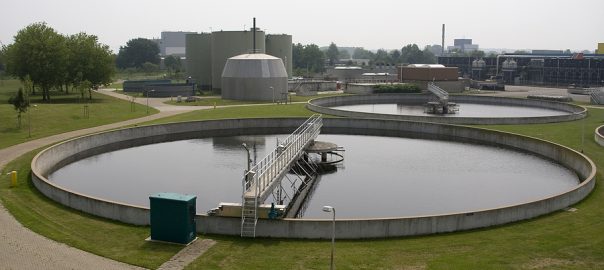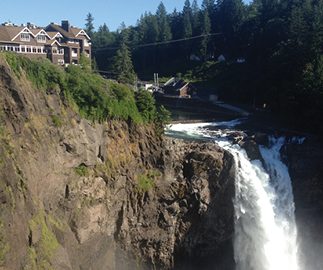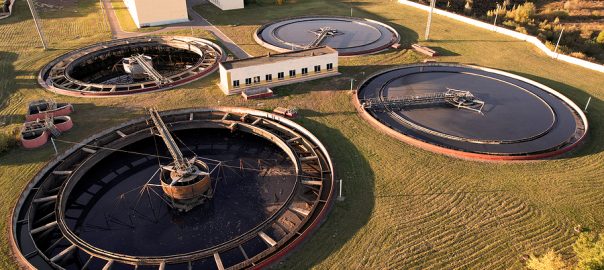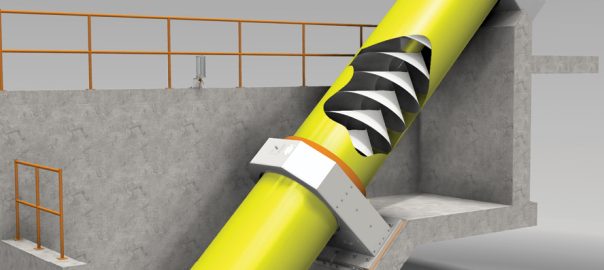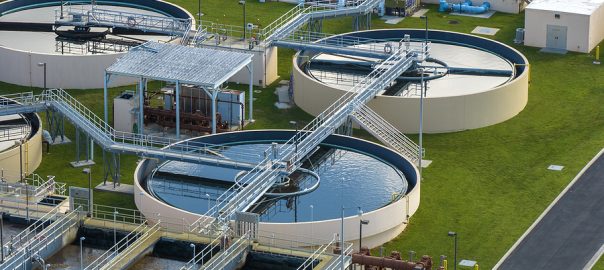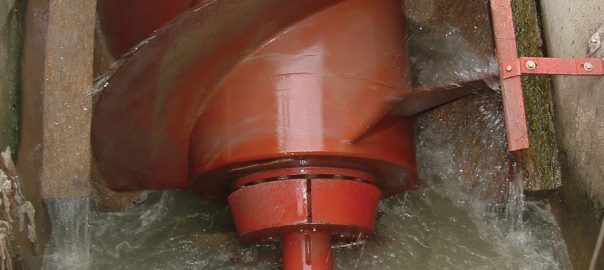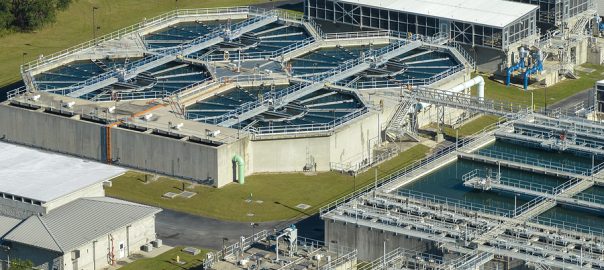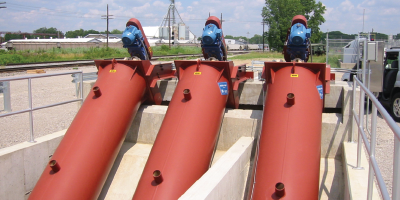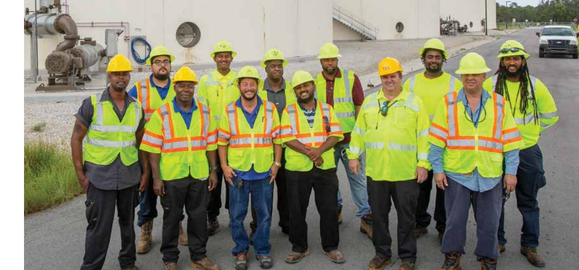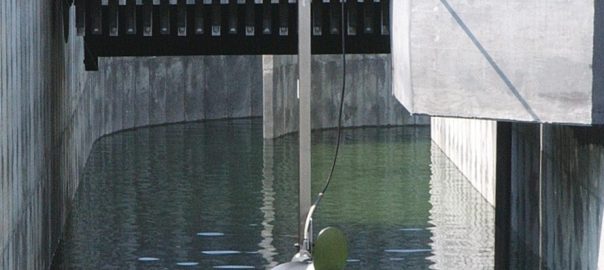
Why is a biological wastewater treatment process so important? Every gallon of water brought to a wastewater treatment plant is contaminated. If it comes from a residential septic tank, it’s filled with urine, feces, and dirty water from laundry, dishes, and showers/baths. The same is true for water that is piped in from sewers. Even industrial wastewater is going to contain contaminants.
It’s important to properly clean water before releasing it into natural water sources. Too much phosphorus can cause algae blooms to take over the lake or pond. Algae will end up depleting the stores of oxygen fish and other aquatic creatures rely on. As many lakes are becoming overrun with blue-green algae, states are all taking measures to limit the chemicals, minerals, and bacteria by making sure water treatment plants meet requirements that remove these items from water.
Primary vs. Secondary Treatments
Before this water returns to lakes, streams, or public water systems, it has to be cleaned and disinfected. That’s done through several steps that include biological wastewater treatment, but there are also primary measures. You have screens that remove items that won’t break down. Many of these items should be trashed, but it doesn’t always happen. People don’t realize the problem it’s posing when they flush things that aren’t meant to be flushed. Tampon applicators, plastic wrappers, toy cars, and baby wipes are just a few of the things that make it to a wastewater treatment plant.
There are two main types of wastewater treatment: primary and secondary. Primary treatment is a fairly basic process that is used to remove suspended solid waste and reduce its biochemical oxygen demand in order to increase dissolved oxygen in the water. Primary is the use of screens and trash rakes to remove larger items. It’s also the grit removal system.
It’s estimated that primary treatment only reduces biochemical oxygen demand by about 30% and suspended solids by up to 60%. Therefore, the water needs to be treated again in order to remove additional contaminants. That’s where secondary treatment comes in.
Secondary treatment involves complex biological processes that are used to remove organic matter that was not removed during primary treatment. You’re using biology and microorganisms to devour and remove other contaminants. There are many different kinds of biological wastewater treatments, however, each treatment can be classified as either an aerobic, anaerobic, or anoxic treatment depending on whether or not oxygen is present. Here’s a quick look at the three.
What Are Biological Aerobic Treatments?
If a treatment is classified as a biological aerobic treatment, it means it takes place in the presence of oxygen. Aeration is needed to oxygenate the wastewater through the use of mixers and aerators. Aerobic treatments work faster and result in cleaner water than anaerobic treatments, which is why they are preferred.
The most popular aerobic treatment is the activated sludge process. At the start of the activated sludge process, wastewater moves into an aeration tank that is pumped full of oxygen. Aerating the wastewater increases microbial growth, which speeds up the decomposition of the organic matter that is still in the water. Then, this wastewater is transferred into a secondary clarifier, which is also known as a secondary settler or settling tank.
The sludge, or waste, within the water will start to separate, leaving only the clean and treated water behind. Remaining sludge can then be converted into a mixture of methane and carbon dioxide that can be used for heat and electricity. Any remaining sludge is dewatered (dried) and composted or sent to a landfill. The activated sludge process is one of the most efficient ways to biologically treat wastewater and it’s effective.
Another popular aerobic treatment is the trickling filter process. During the trickling filter process, wastewater flows over a bed of rocks, gravel, ceramic, peat moss, coconut fibers, or plastic. As the wastewater flows, the microorganisms in the water quickly start to attach to the bed. A layer of microbial film will soon start to grow over the bed. Over time, the aerobic microorganisms found in this layer of microbial film will start to break down the organic matter found in the water. If needed, oxygen can be infused or splashed into the wastewater to maintain aerobic conditions.
The trickling filter process can rapidly reduce high concentrations of organic matter in the water, however, there are disadvantages to this method as well. A trained professional will need to watch over this process from the start to finish, so this may not be the best choice for facilities with limited resources. Clogs are also fairly common, so the trained professional will need to know how to identify and fix this issue.
Some facilities use aerated lagoons as opposed to the activated sludge process. With this method, the wastewater sits in a treatment pond, where it is mechanically aerated. Pumping oxygen into the pond will increase microbial growth and speed up the decomposition of organic matter. However, unlike the activated sludge process, the water is not moved into another tank after it has been aerated. Instead, the separation of the sludge and the clean water happens within the treatment pond.
Using an oxidation pond is another way to biologically treat the wastewater. This process involves removing the organic matter from wastewater using an interaction between bacteria, algae, and other microorganisms. This method may seem similar to an aerated lagoon, but it is far more complex and it takes much longer to achieve the desired results. This process also requires a lot more land space than the others, so it is typically not used in areas that are densely populated.
What Are Biological Anaerobic Treatments?
Biological anaerobic treatments take place in the absence of oxygen. Aerobic treatments are usually preferred, however, it is best to use an anaerobic treatment when dealing with highly concentrated wastewater.
The upflow anaerobic sludge blanket reactor is a single-tank anaerobic treatment, which means it takes place in one tank. This process begins with the wastewater entering through the bottom of the reactor tank. As the wastewater naturally starts to flow upwards, it encounters a sludge blanket that is suspended within the tank.
The sludge blanket consists of microbial microorganisms that break down organic matter within the wastewater. When the wastewater encounters the sludge blanket, the microorganisms quickly break down the organic matter, leaving clean water behind to rise to the top of the tank. There are other similar anaerobic treatments, including the anaerobic filter, which involves a filter that has microbial microorganisms on its surface.
What About Biological Anoxic Treatments?
You also have anoxic treatments. In this case, the microorganisms use other molecules to multiply. There may not be oxygen, but nitrates and nitrates act in its place. Anoxic treatments help remove nitrates and nitrites, selenates and selenites, and sulfates from the wastewater.
People are seeing this more in areas where nitrates and sulfates are a concern. It’s the best way to remove as many of them as possible. Anoxic treatments work without adding additional chemicals.
While many states stopped using laundry detergents that contained phosphates, you still see shampoos and soaps with sulfates and nitrates. High levels of sulfates can give water an unpleasant taste and can be dehydrating. High levels of nitrates can impact how oxygen moves around the bloodstream. While it takes a lot to affect a person’s health, it’s still important for water districts to make sure water is safe for everyone.
What Happens After Wastewater is Biologically Treated?
It’s estimated that biological treatments can remove up to 90% of the wastewater’s contaminants. Because all of the contaminants have not been removed, the wastewater is usually sent through a tertiary treatment process after the biological treatment. During this stage, heavy metals, nutrients, and other impurities are removed from the wastewater.
The most common type of tertiary treatment involves the use of chlorine, which is a powerful disinfectant. Small amounts of chlorine are added to the water to remove the remaining impurities before the water is discharged into the environment. There are other ways to disinfect the water that do not involve chemicals. Many facilities avoid the use of chlorine by using UV light to treat the water.
Regardless of which method is used, it is estimated that about 99% of all contaminants have been removed from the wastewater after it has completed this treatment. Once the chlorine is at safe levels, the water can be released back into water sources or moved to storage tanks that supply homes and businesses with water.
What Equipment Is Needed?
The equipment that’s needed for biological treatment systems depends on the area and load. A large city processes far more wastewater than a small town. Systems may want to put a lot of focus on being energy efficient. So many have strict discharge restrictions that must be adhered to. Take a look at some of the equipment that’s used in biological treatments.
#1 – Closed Loop Reactor (CLR) Process
The CLR Process is ideal for its consistency and performance whether you’re in a cold climate or a warm one. It’s designed in a closed loop like a circle or extended oval like you’d see at a race track. Aerators and multi-basin designs complete the system. Because this system is customized for simple, effective operation, it can handle increased loads with ease and doesn’t require a lot of attention from workers in a wastewater treatment plant.
Not only can you save money with the CLR Process, but it also helps lower energy costs. It’s adept at removing phosphorus and nitrogen. If you need a system that works well at cleaning water without driving up costs for the members of your district.
#2 – Extended Aeration/Complete Mix Process
An economical solution biologically processing of wastewater is a package treatment plant. It’s a smaller design that’s ideal when space is limited. Choose an E.A. Aerotor Plant or a Packaged Extended Aeration Plant. What are the differences?
An E.A. Aerotor Plant uses the design from a CLR Process for aeration and mixing and a Spiraflo Clarifier to help the sludge settle. The addition of oxygen in the aeration/mixing process aides biological processing and helps remove more sludge. You add other components as needed to create a custom wastewater treatment design.
You could choose the Package Extended Aeration Plant to have an all-in-one system in a single steel tank. It is designed for low usage and includes your screens, aeration, clarification, sludge tank, and disinfection in one. You don’t need a lot of manpower to effectively operate this system.
#3 – Sequencing Batch Reactors
Treat wastewater in one basin using the Sequencing Batch Reactor or Continuous Feed Sequencing Batch Reactor. This system works by aerating and mixing wastewater to create a lot of oxygen. It then “decants” so that the water is discharged without needing activated sludge pumping or external clarifiers. It allows biological wastewater processing to process for an extended period.
#4 – Magna Rotors
If you’re relying on a system that does add oxygen to help with biological wastewater treatment, Magna Rotors are one of the leading choices. Think of them as large mixers that add oxygen. The benefit is that the rotors have a fiberglass cover that does not get too cold in the winter. You’re not as likely to see the equipment stop working in the winter. The stainless steel blades are also durable and not likely to become bent or dented.
#5 – SharpBNR Process Control
This is an add-on that can help with overall energy consumption and performance. The process control can be programmed to measure things like dissolved oxygen and aeration. Adjust them as needed to meet your goals using a computer or the Human Machine Interface on the control panel. You can link it to a SCADA system, too.
Since 1928, Lakeside Equipment Corporation has been committed to providing clean and healthy water to people around the world using innovative biological treatment processes. Contact Lakeside Equipment Corporation to learn more about our biological treatment systems. Call 630-837-5640 or visit our website to connect with one of our knowledgeable representatives today.

